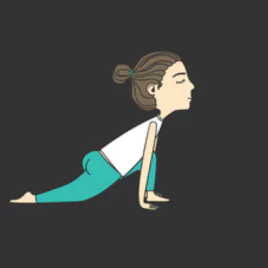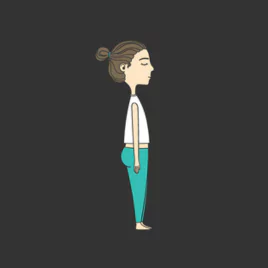Learn to Perform Surya Namaskar Steps Images With Names

Surya Namaskar, or Sun Salutation, is a series of twelve yoga poses that are performed in a sequence, typically at the beginning of a yoga practice. This powerful practice has been an integral part of yoga for centuries, serving as a warm-up and meditation tool while also offering physical and mental benefits. In this comprehensive guide, we will delve into the steps involved in performing Surya Namaskar Steps images with names, its benefits, and tips for beginners to start their journey.
- The Significance of Surya Namaskar
- Benefits of Surya Namaskar
- Preparations for Surya Namaskar
- Step-by-Step Instructions to Perform Surya Namaskar
- Pranamasana (Prayer Pose)
- Hasta Uttanasana (Raised Arms Pose)
- Uttanasana (Standing Forward Bend)
- Ashwa Sanchalanasana (Equestrian Pose)
- Dandasana (Plank Pose)
- Ashtanga Namaskara (Eight-Limbed Salutation)
- Bhujangasana (Cobra Pose)
- Adho Mukha Svanasana (Downward-Facing Dog)
- Ashwa Sanchalanasana (Equestrian Pose)
- Uttanasana (Standing Forward Bend)
- Hasta Uttanasana (Raised Arms Pose)
- Pranamasana (Prayer Pose)
- Tips for Beginners
- Common Mistakes and How to Avoid Them
- Wrapping Up
1 The Significance of Surya Namaskar
Surya Namaskar is a Sanskrit term that translates to “Sun Salutation.” It is a series of 12 yoga poses performed in a continuous flow, synchronised with the breath. The practice is traditionally performed at sunrise as a way to greet and pay respect to the sun, which is considered the source of life and energy.
The practice of Surya Namaskar has a rich history in Indian culture, as it was originally a ritual performed by Hindu priests to express gratitude to the sun. Today, the practice has evolved into a popular yoga routine that offers physical, mental, and spiritual benefits.
2 Benefits of Surya Namaskar
Surya Namaskar offers numerous benefits for those who practice it regularly. Some of the key benefits include:
- Improved flexibility: The sequence of poses in Surya Namaskar stretches and strengthens various muscle groups, leading to enhanced flexibility.
- Enhanced strength: The poses in Surya Namaskar helps in building muscle strength, particularly in the arms, shoulders, and legs.
- Weight loss: Regular practice of Surya Namaskar can aid in weight loss, as it boosts metabolism and burns calories.
- Improved digestion: The sequence of poses stimulates the digestive system and can help alleviate issues like constipation and bloating.
- Stress reduction: Surya Namaskar helps in calming the mind and reducing stress levels, thanks to its meditative nature.
- Enhanced mental focus: The practice of synchronising breath with movement helps in developing mental clarity and focus.
3 Preparations for Surya Namaskar
Before beginning your Surya Namaskar practice, it’s important to prepare your body and mind. Here are some tips to help you get started:
Choose a suitable time: Although Surya Namaskar is traditionally performed at sunrise, you can practice it at any time of day that suits your schedule. Just ensure that your stomach is empty and you’ve given yourself at least 3-4 hours after a meal.
Find a quiet space: Choose a quiet, well-ventilated space where you can focus on your practice without distractions.
Wear comfortable clothing: Wear light, breathable clothing that allows for ease of movement.
Use a yoga mat: A good-quality yoga mat will provide the necessary support and grip during your practice.
4 Step-by-Step Instructions to Perform Surya Namaskar
Surya Namaskar consists of 12 steps, which are performed in a continuous flow. Here’s a detailed breakdown of each step:
Pranamasana (Prayer Pose)

- Stand at the front of your mat, with your feet together and your arms by your sides.
- Inhale and bring your palms together in front of your chest in a prayer position.
- Keep your shoulders relaxed and your chest open.
Hasta Uttanasana (Raised Arms Pose)

- Inhale and raise your arms overhead, keeping your palms together.
- Gently arch your back, maintaining a slight bend in your knees to protect your lower back.
Uttanasana (Standing Forward Bend)

- Exhale and bend forward from your hips, keeping your spine straight.
- Place your hands on the floor beside your feet or hold onto your shins, depending on your flexibility.
- Aim to bring your chest as close to your thighs as possible.
Ashwa Sanchalanasana (Equestrian Pose)

- Inhale and step your right foot back into a lunge, keeping your left foot between your hands.
- Lower your right knee to the floor and arch your back, looking up toward the sky.
- Ensure your left knee is directly above your left ankle.
Dandasana (Plank Pose)

- Exhale and step your left foot back to meet your right foot, coming into a plank position.
- Keep your body in a straight line from head to toe, engaging your core muscles.
Ashtanga Namaskara (Eight-Limbed Salutation)

- Lower your knees, chest, and chin to the floor while keeping your hips slightly elevated.
- This pose engages eight points of contact with the floor: the two hands, two feet, two knees, chest, and chin.
Bhujangasana (Cobra Pose)

- Inhale and slide your chest forward, lifting it off the floor and straightening your arms.
- Keep your hips and legs on the ground, pressing the tops of your feet into the mat.
- Gently arch your back and look up, keeping your shoulders away from your ears.
Adho Mukha Svanasana (Downward-Facing Dog)

- Exhale and lift your hips, coming into an inverted V shape.
- Press your heels toward the floor and spread your fingers wide for stability.
- Relax your head and neck, looking toward your navel.
Ashwa Sanchalanasana (Equestrian Pose)

- Inhale and step your right foot forward between your hands, coming into a lunge.
- Lower your left knee to the floor and arch your back, looking up toward the sky.
- Ensure your right knee is directly above your right ankle.
Uttanasana (Standing Forward Bend)

- Exhale and step your left foot forward to meet your right foot, coming into a forward bend.
- Place your hands on the floor beside your feet or hold onto your shins, depending on your flexibility.
- Aim to bring your chest as close to your thighs as possible.
Hasta Uttanasana (Raised Arms Pose)

- Inhale and raise your arms overhead, keeping your palms together.
- Gently arch your back, maintaining a slight bend in your knees to protect your lower back.
Pranamasana (Prayer Pose)

- Exhale and bring your palms together in front of your chest in a prayer position.
- Stand tall, with your feet together and your arms by your sides.
This completes one round of Surya Namaskar. Repeat the sequence, starting with your left foot and stepping back in step 4 to balance both sides of your body.
5 Tips for Beginners
- Start slow: If you’re new to Surya Namaskar, begin with just a few rounds and gradually increase the number as you become more comfortable.
- Focus on your breath: Synchronize your breath with each movement, inhaling as you expand and exhaling as you contract. This will help you stay focused and centred during your practice.
- Modify poses if needed: If you find certain poses challenging, feel free to modify them to suit your level of flexibility and strength. Use props, such as yoga blocks or straps, if necessary.
- Warm-up: Before starting Surya Namaskar, perform a light warm-up to prepare your body for the practice. This can include some gentle stretches, joint rotations, or a few minutes of light cardio.
6 Common Mistakes and How to Avoid Them
Holding your breath: Remember to breathe smoothly and continuously throughout the practice, matching each movement with either an inhalation or exhalation.
Overarching the lower back: In poses such as Hasta Uttanasana and Bhujangasana, focus on lengthening your spine rather than compressing your lower back. Engage your core muscles to provide support.
Misalignment in the lunge: In Ashwa Sanchalanasana, ensure that your front knee is directly above your ankle to prevent strain on your knee joint. Keep your hips square and facing forward.
Rushing through the sequence: Maintain a steady pace, allowing time for each breath and movement. This will help you develop mindfulness and presence during your practice.
7 Wrapping Up
Surya Namaskar is a powerful and comprehensive yoga practice that offers numerous benefits for the body and mind. By following the step-by-step instructions provided in this guide, you can begin to incorporate this ancient practice into your daily routine. Remember to start slow, focus on your breath, and listen to your body as you progress in your Surya Namaskar journey. As you become more comfortable with the sequence, you will experience increased flexibility, strength, mental clarity, and an overall sense of well-being.
Community Q&A
About This Article
This article has been viewed 863 times.



